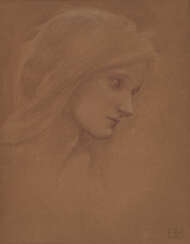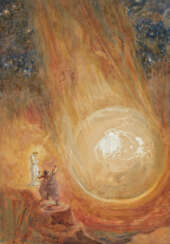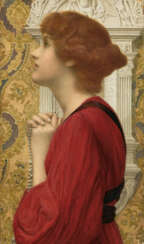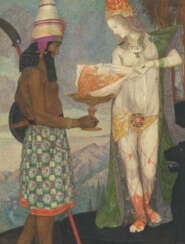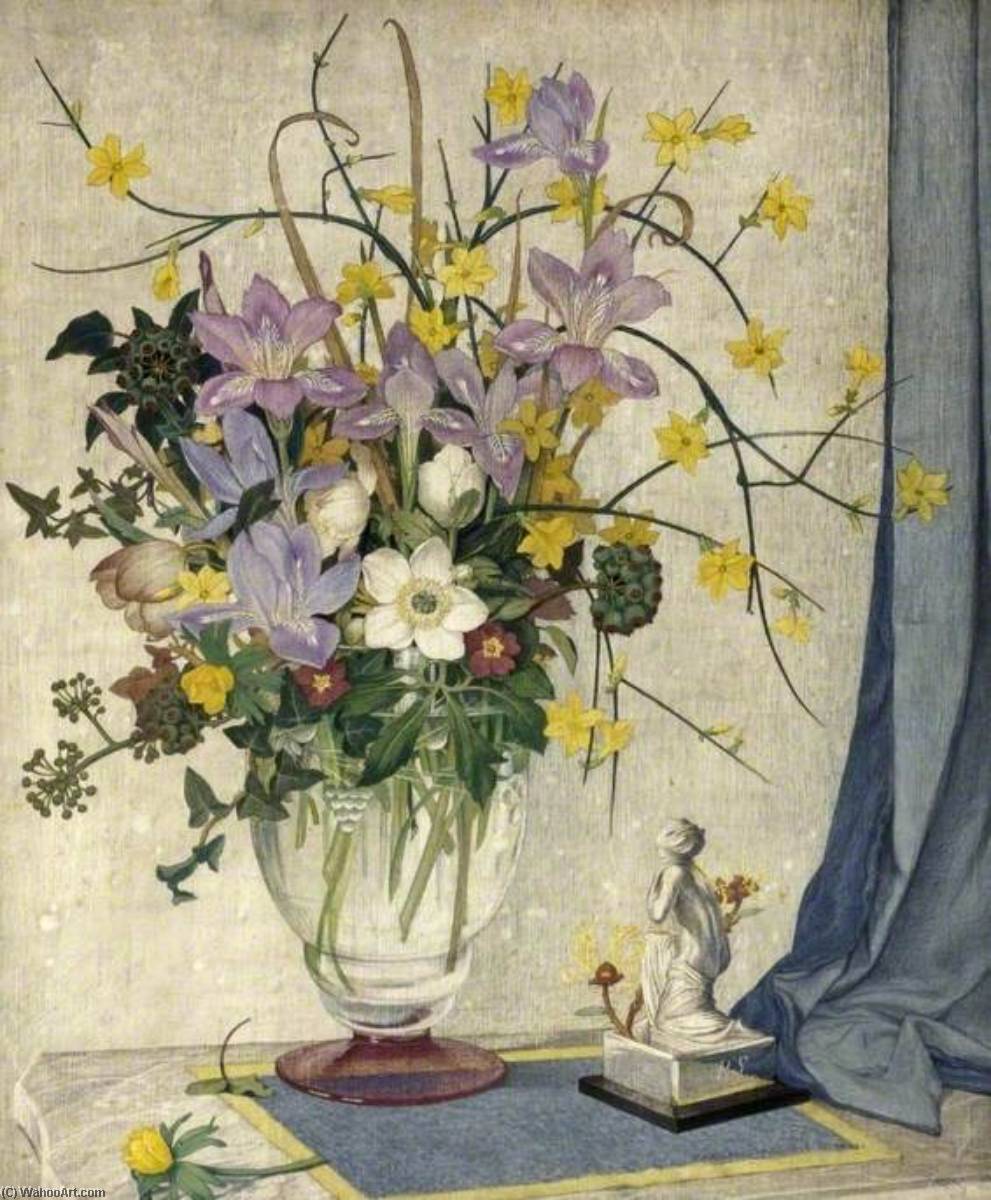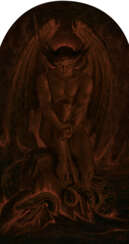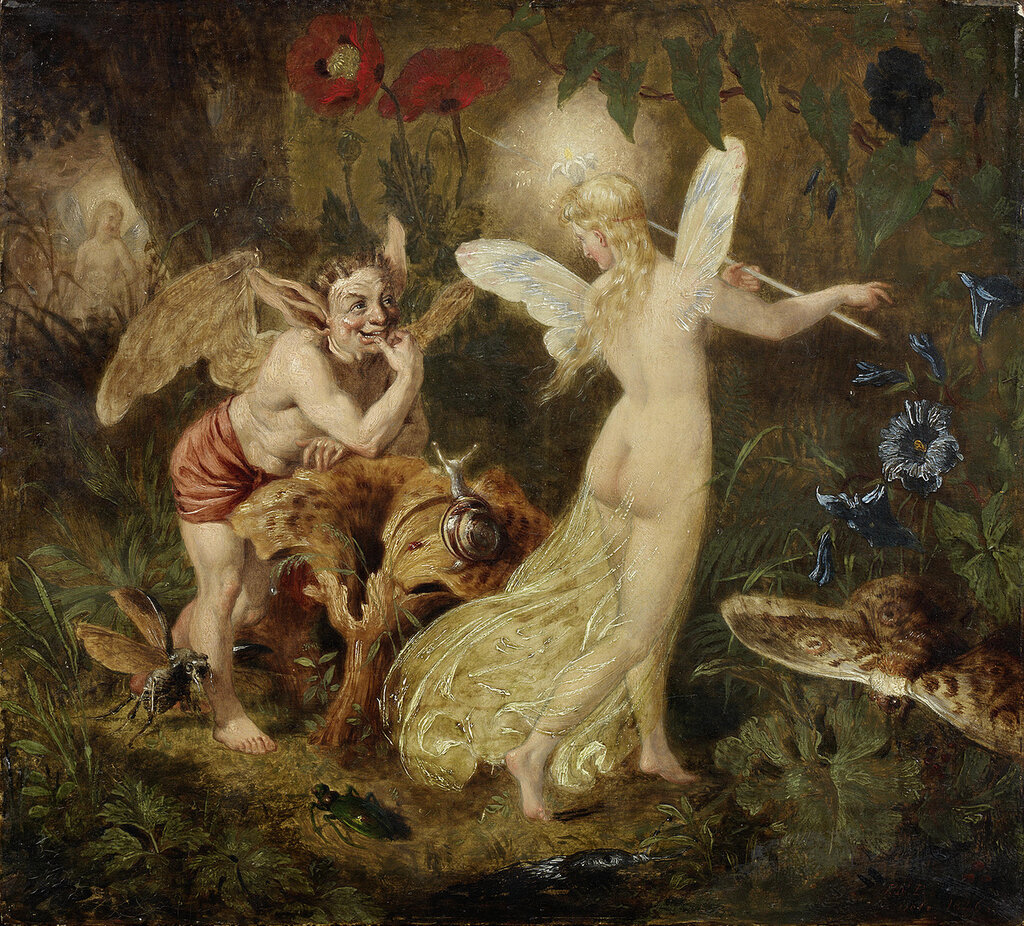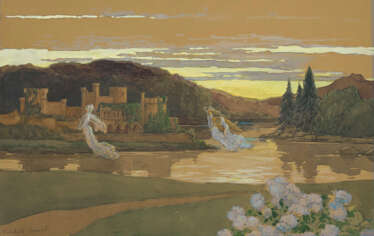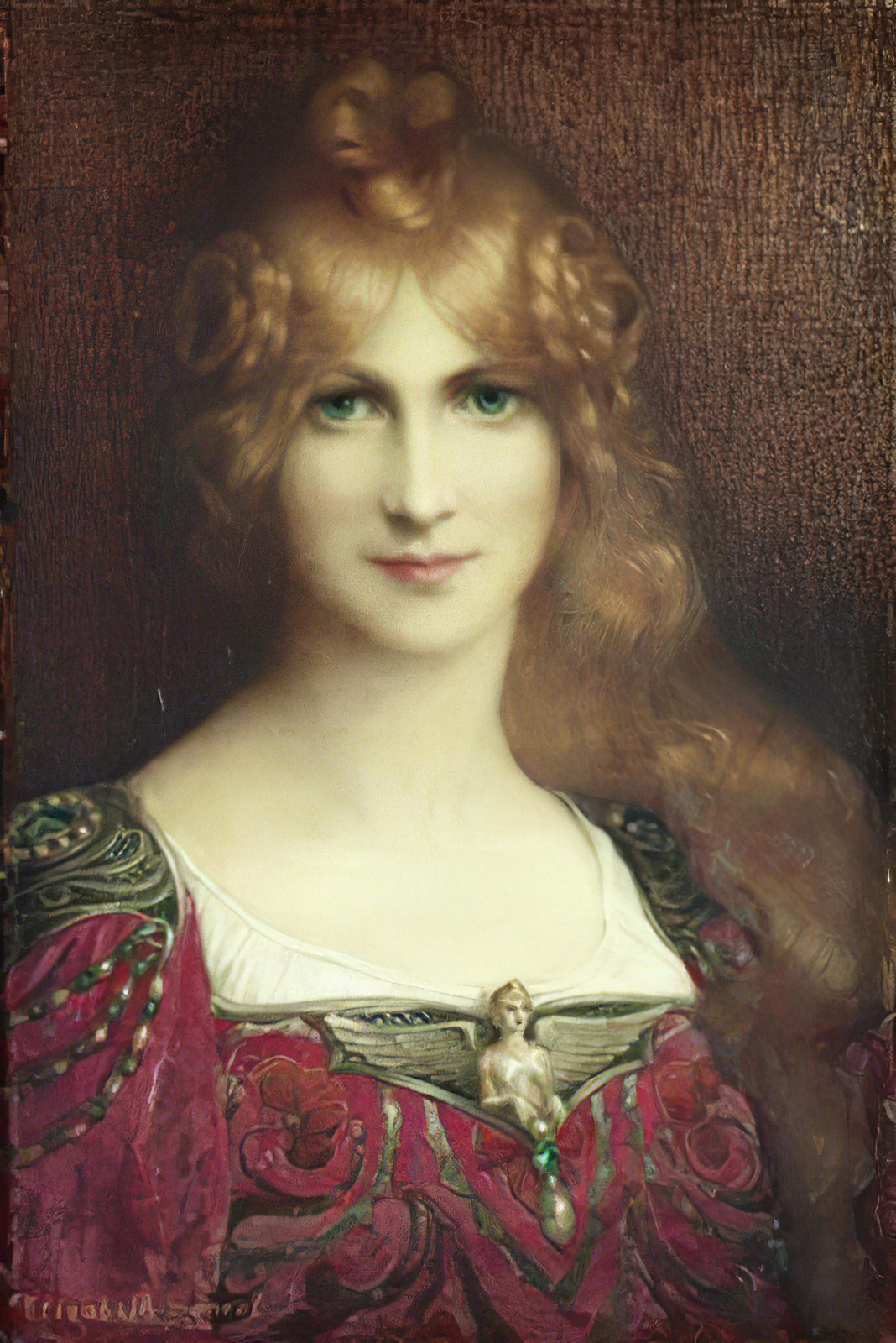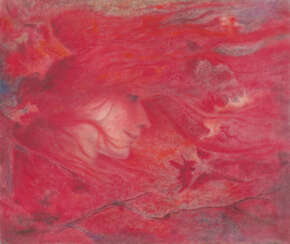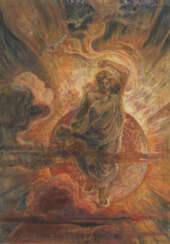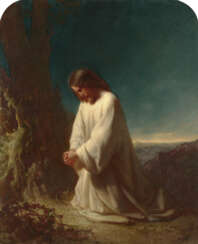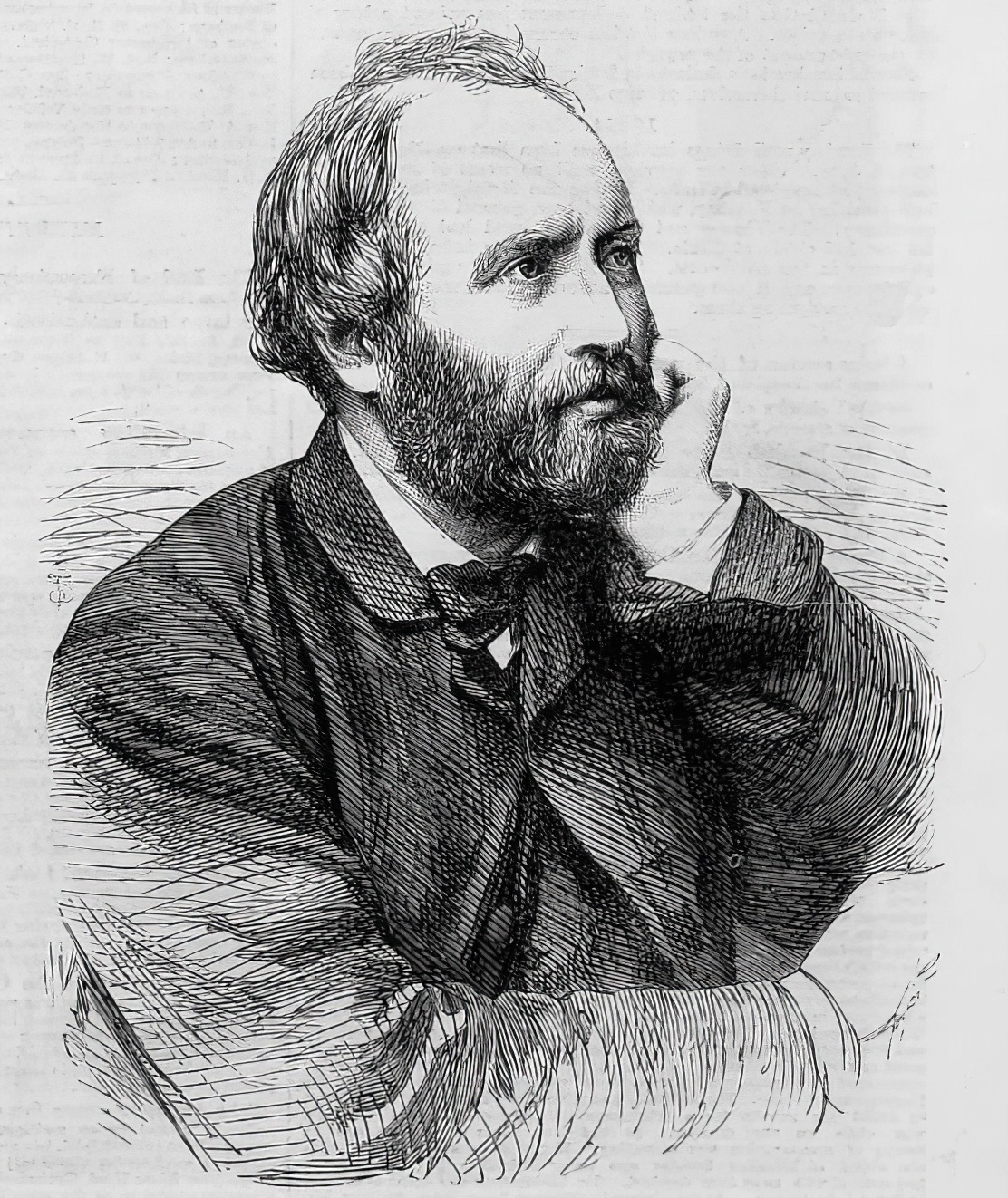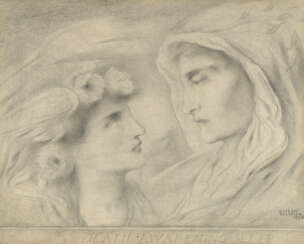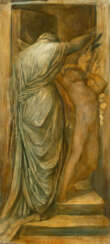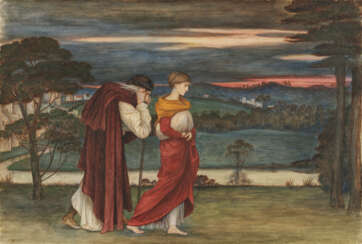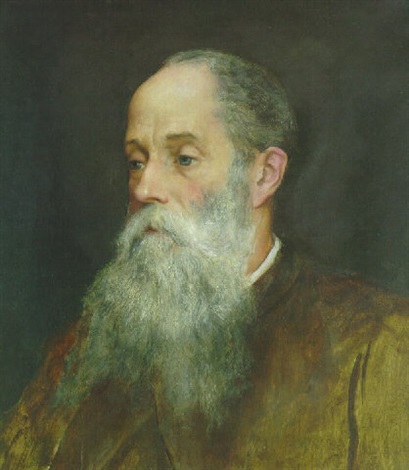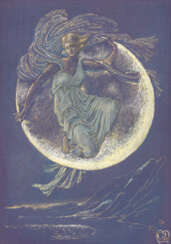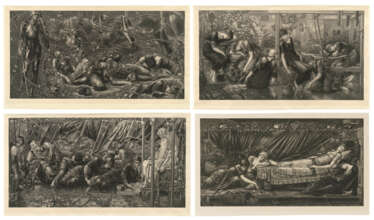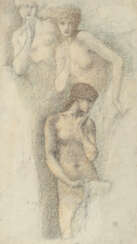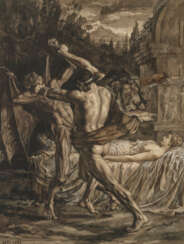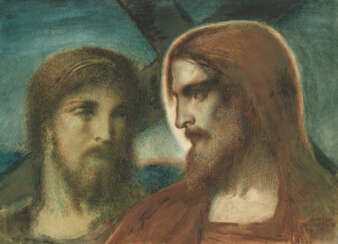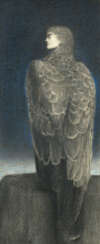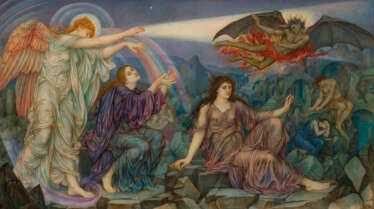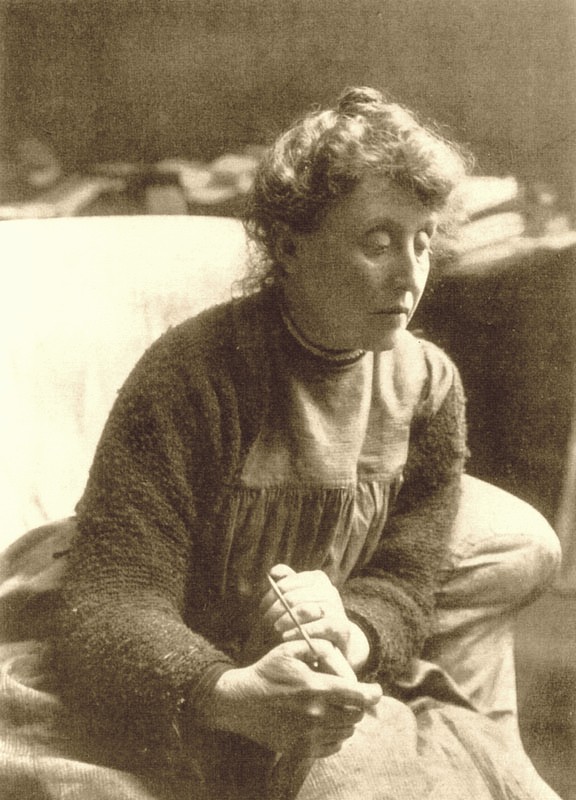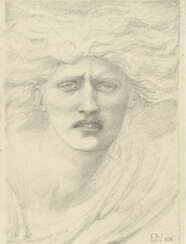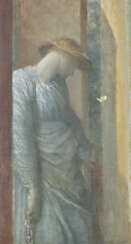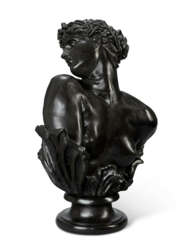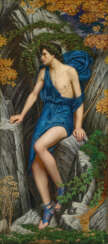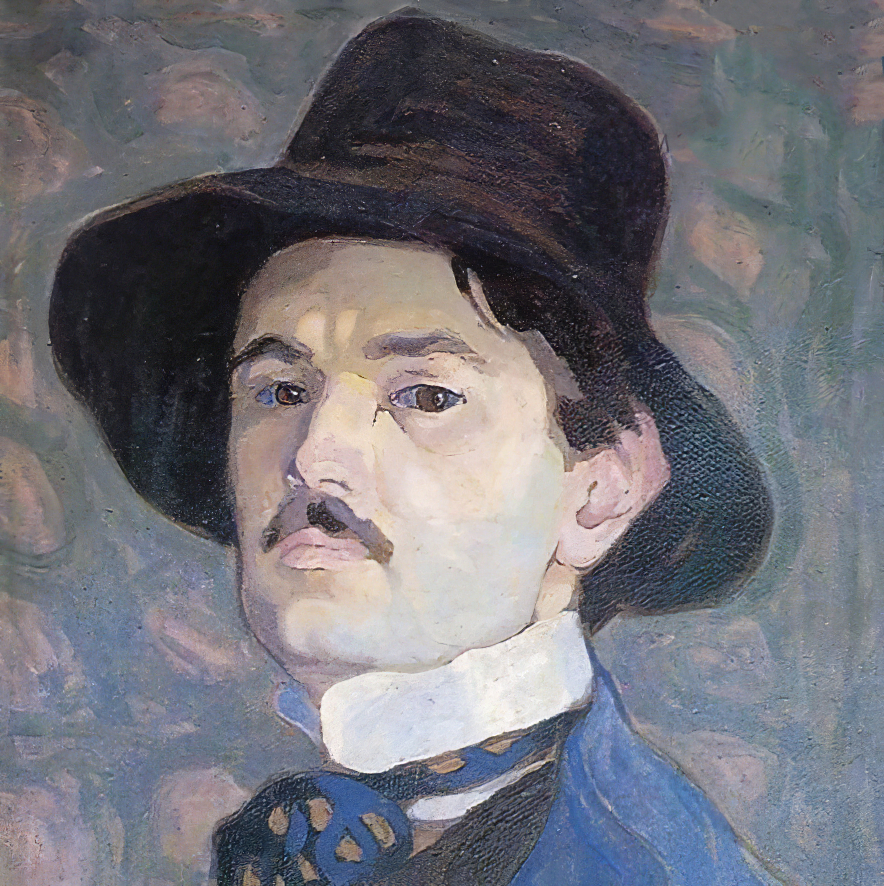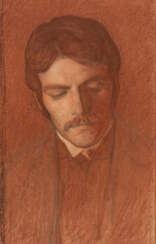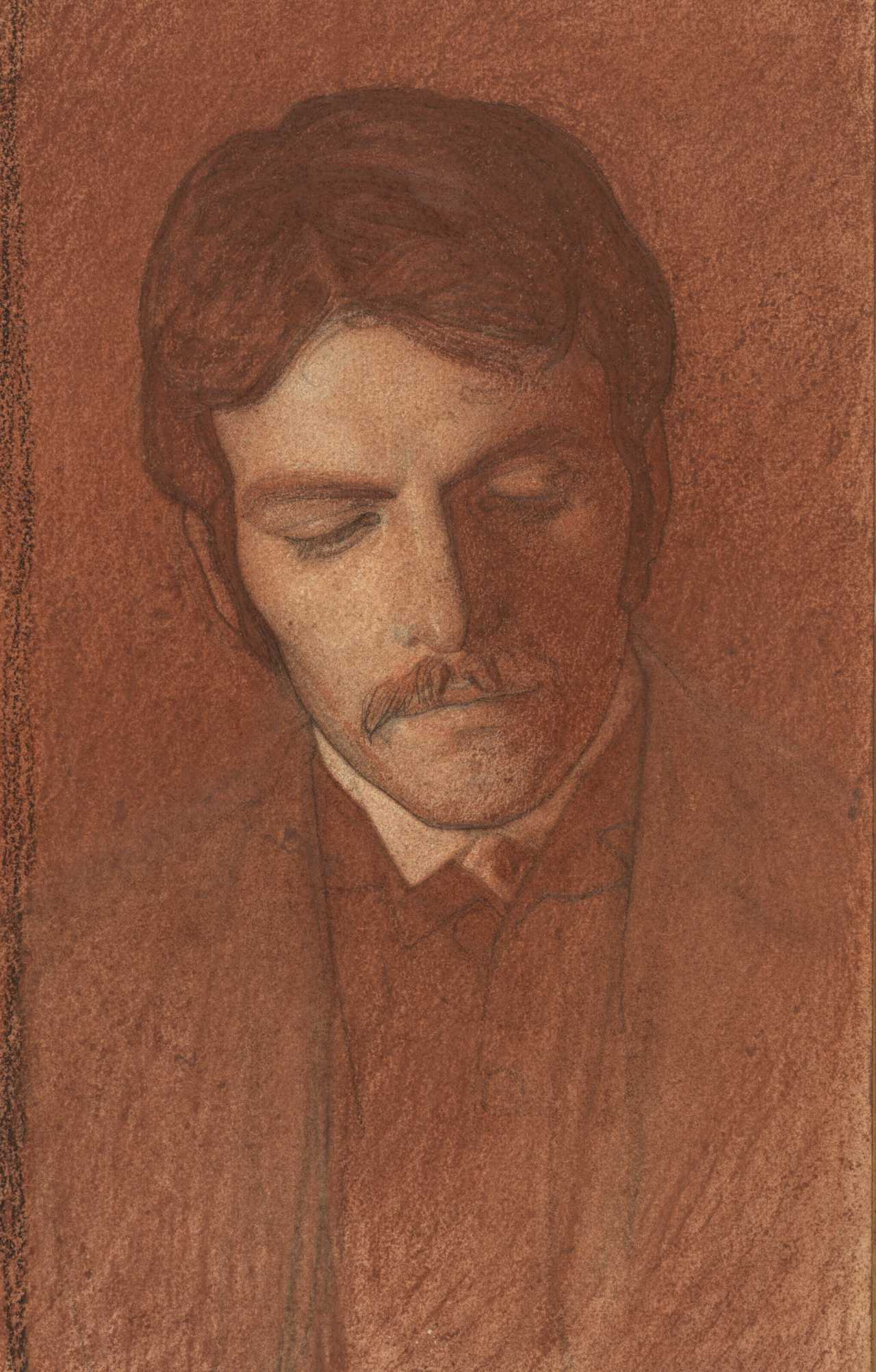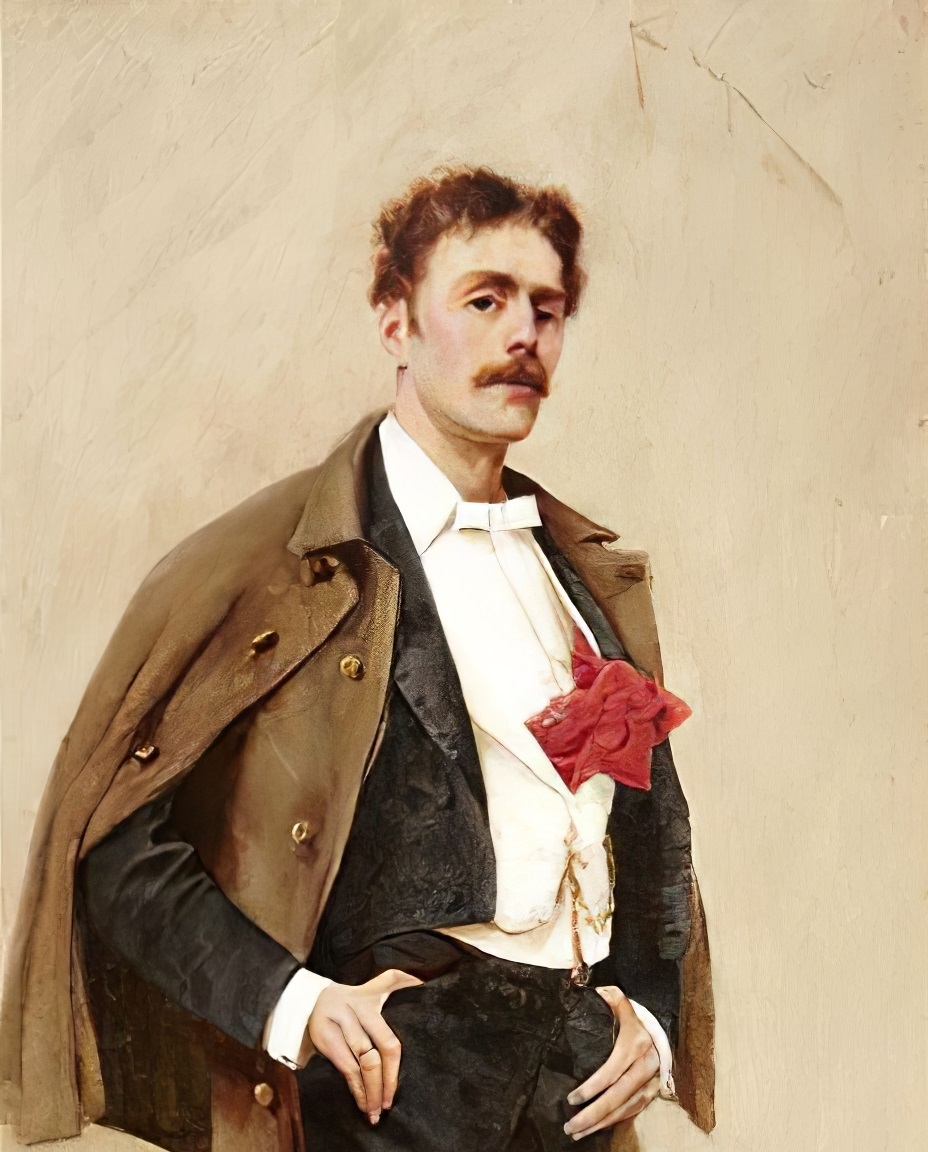
The Isabel Goldsmith Collection: Selected Pre-Raphaelite and Symbolist Art
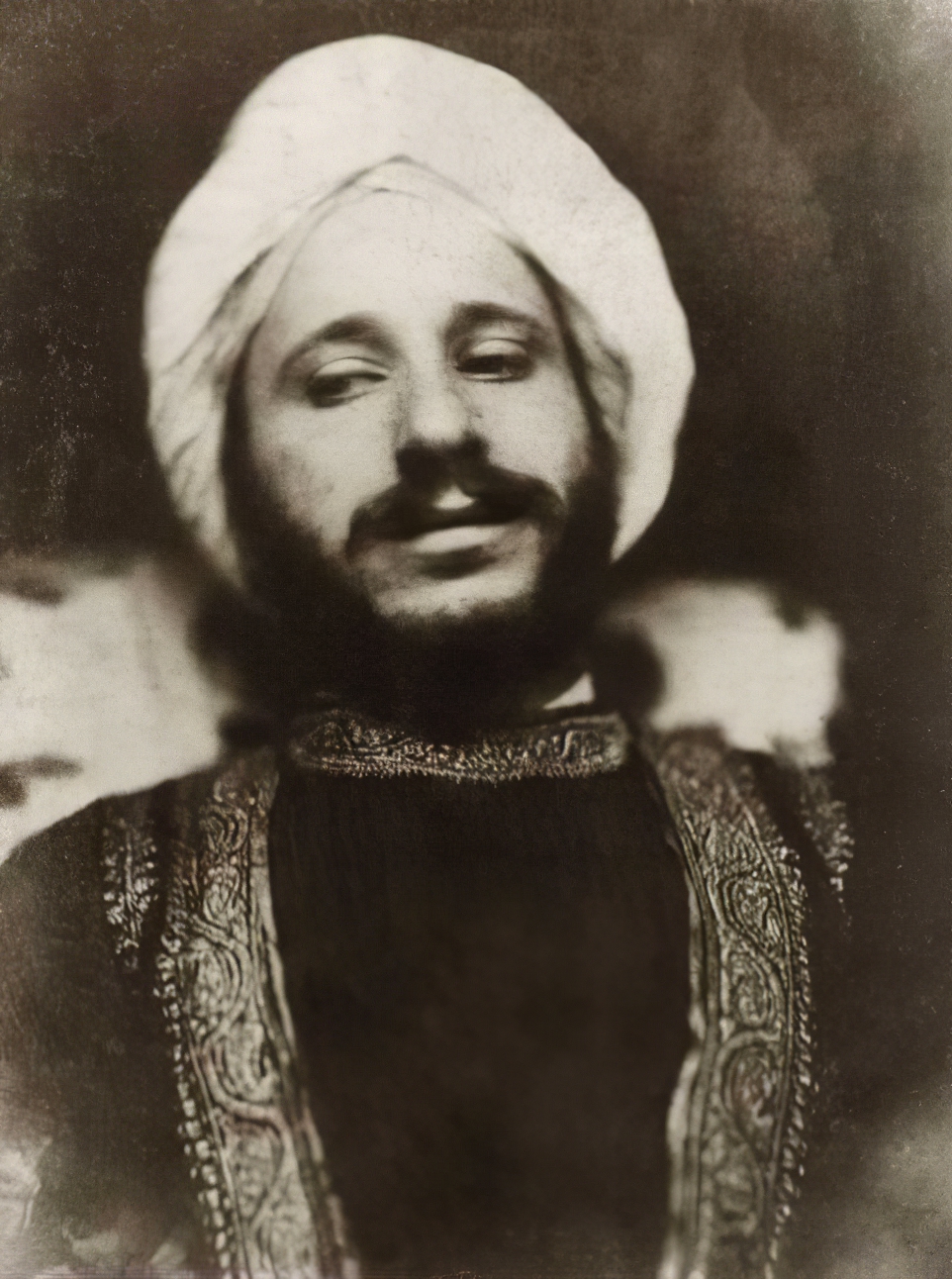
Simeon Solomon was a British painter associated with the Pre-Raphaelites who was noted for his depictions of Jewish life and same-sex desire. His career was cut short as a result of public scandal following his arrests and convictions for attempted sodomy in 1873 and 1874.
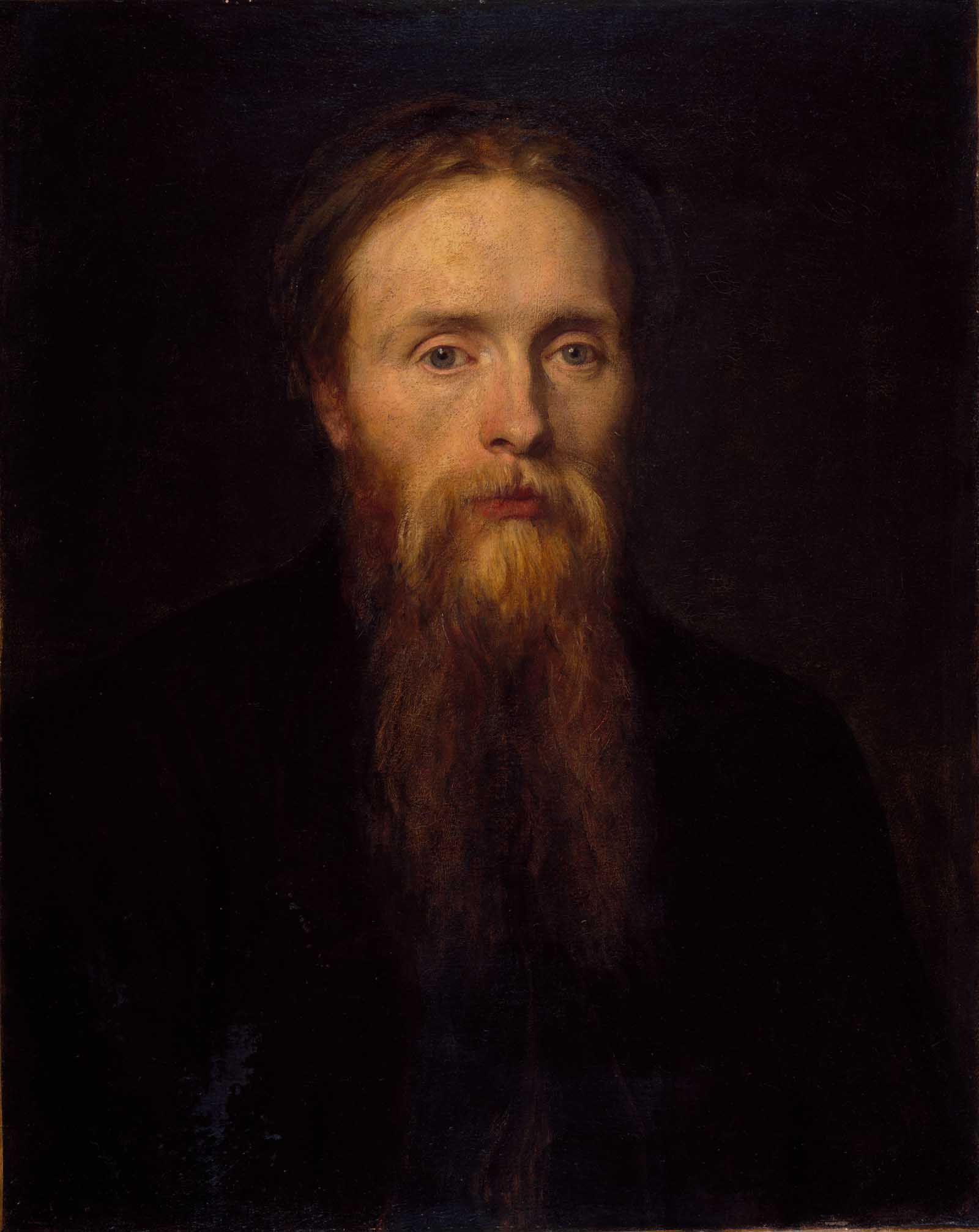
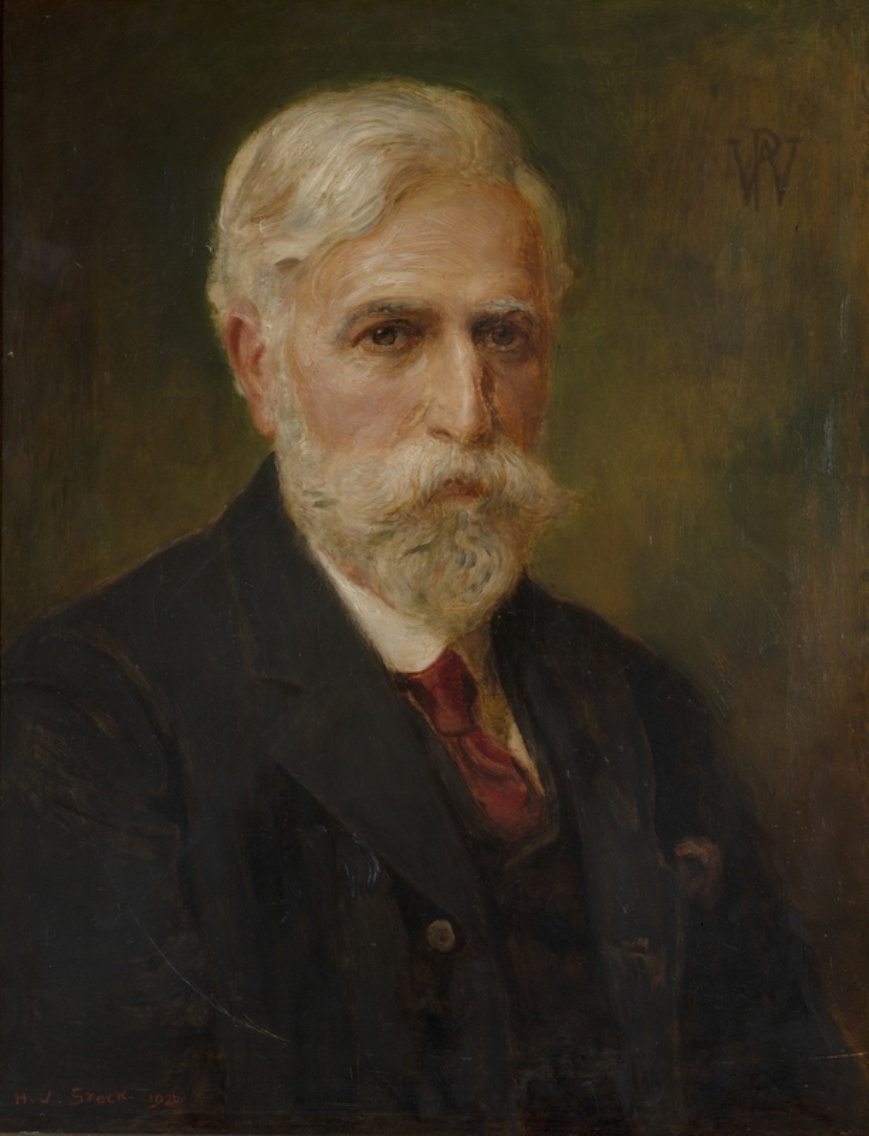
Henry John Stock was a British Pre-Raphaelite painter and representative of the English Romantic tradition.
Henry was nearly blind as a child, but gained his sight when he went to live at Beaulieu in the New Forest. Fully recovered, he attended St. Martin's School of Art and the Royal Academy schools. And apparently the trials of his childhood played a role in the artist's outlook. Stock enjoyed success as a secular portraitist, but his main area of interest has always been fantasy, religious and mythological subjects.
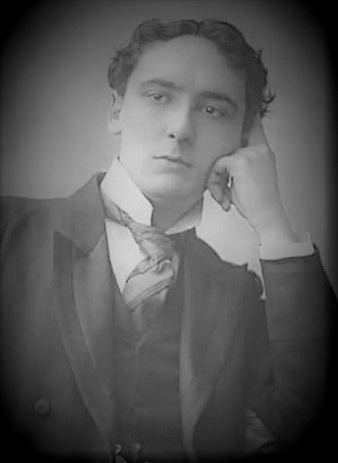
Henry Ryland was a British painter, book illustrator, decorator and designer. He exhibited at the Grosvenor Gallery, and from 1890 at the Royal Academy. He also was a regular exhibiter at the New Gallery and the Royal Institute of Painters in Water Colours (formerly the New Society of Painters in Water Colours). He became a full member of the latter institution. Although he did paint in oils, he specialized in highly finished watercolour paintings containing images of young women in classical draperies on marble terraces. His watercolours were widely reproduced as prints. Ryland also designed stained glass and his woodcuts were used in a number of magazines, including the English Illustrated Magazine in the 1880s and 1890s.
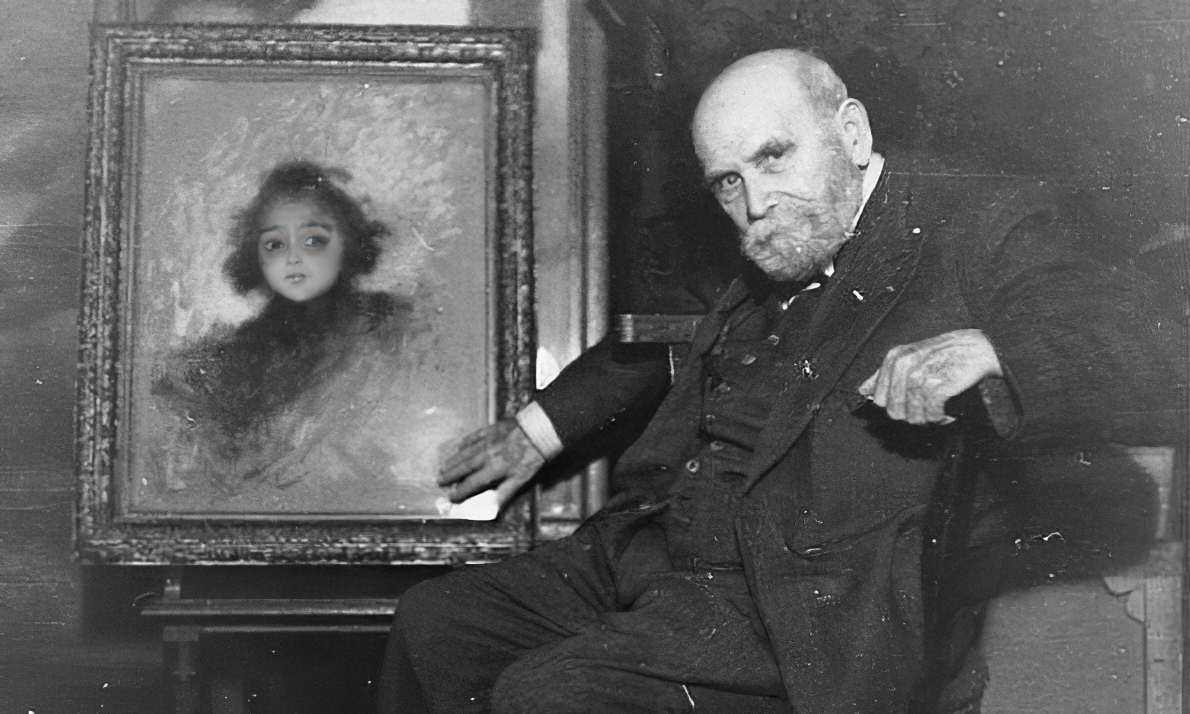
Lucien Lévy-Dhurmer was a French artist and a leading exponent of fin-de-siècle Symbolism and Art Nouveau. His works include paintings, drawings, ceramics, furniture and interior design.

Henry John Stock was a British Pre-Raphaelite painter and representative of the English Romantic tradition.
Henry was nearly blind as a child, but gained his sight when he went to live at Beaulieu in the New Forest. Fully recovered, he attended St. Martin's School of Art and the Royal Academy schools. And apparently the trials of his childhood played a role in the artist's outlook. Stock enjoyed success as a secular portraitist, but his main area of interest has always been fantasy, religious and mythological subjects.
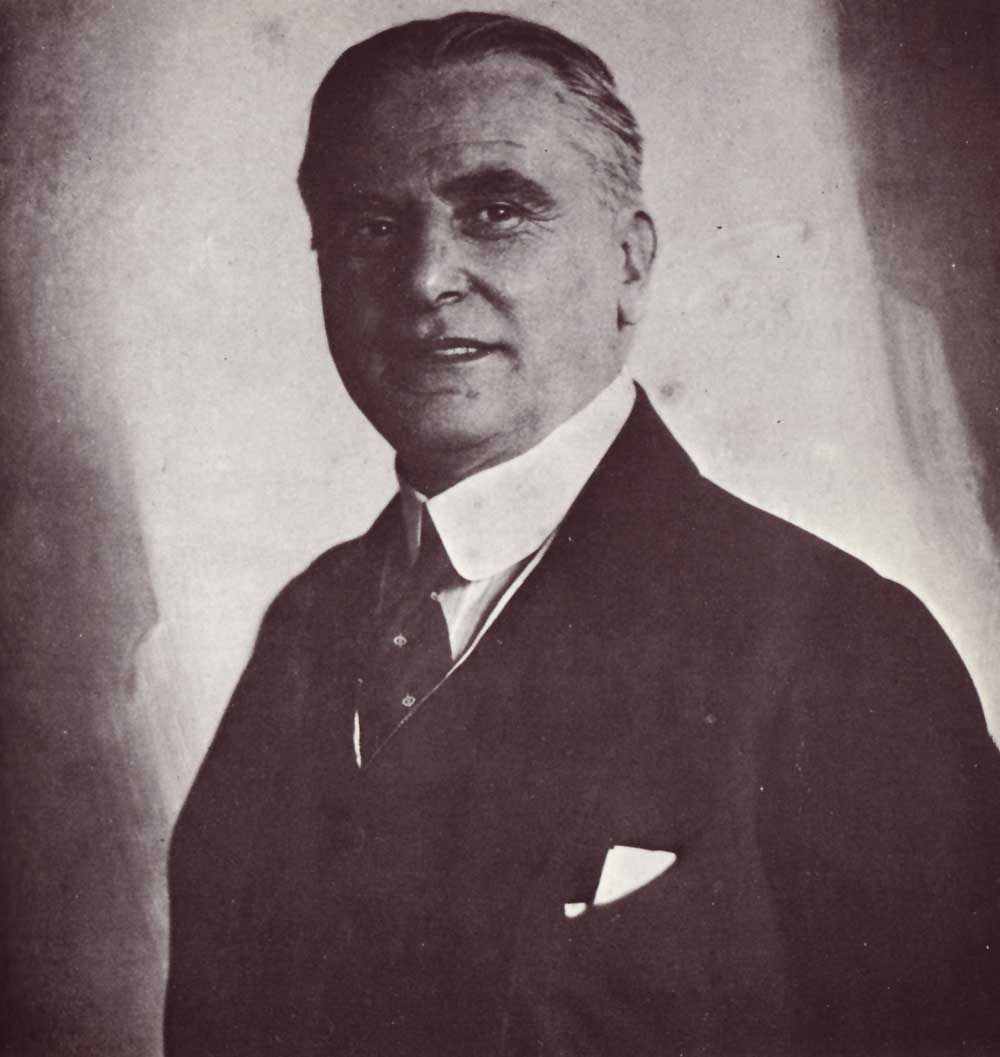

Simeon Solomon was a British painter associated with the Pre-Raphaelites who was noted for his depictions of Jewish life and same-sex desire. His career was cut short as a result of public scandal following his arrests and convictions for attempted sodomy in 1873 and 1874.
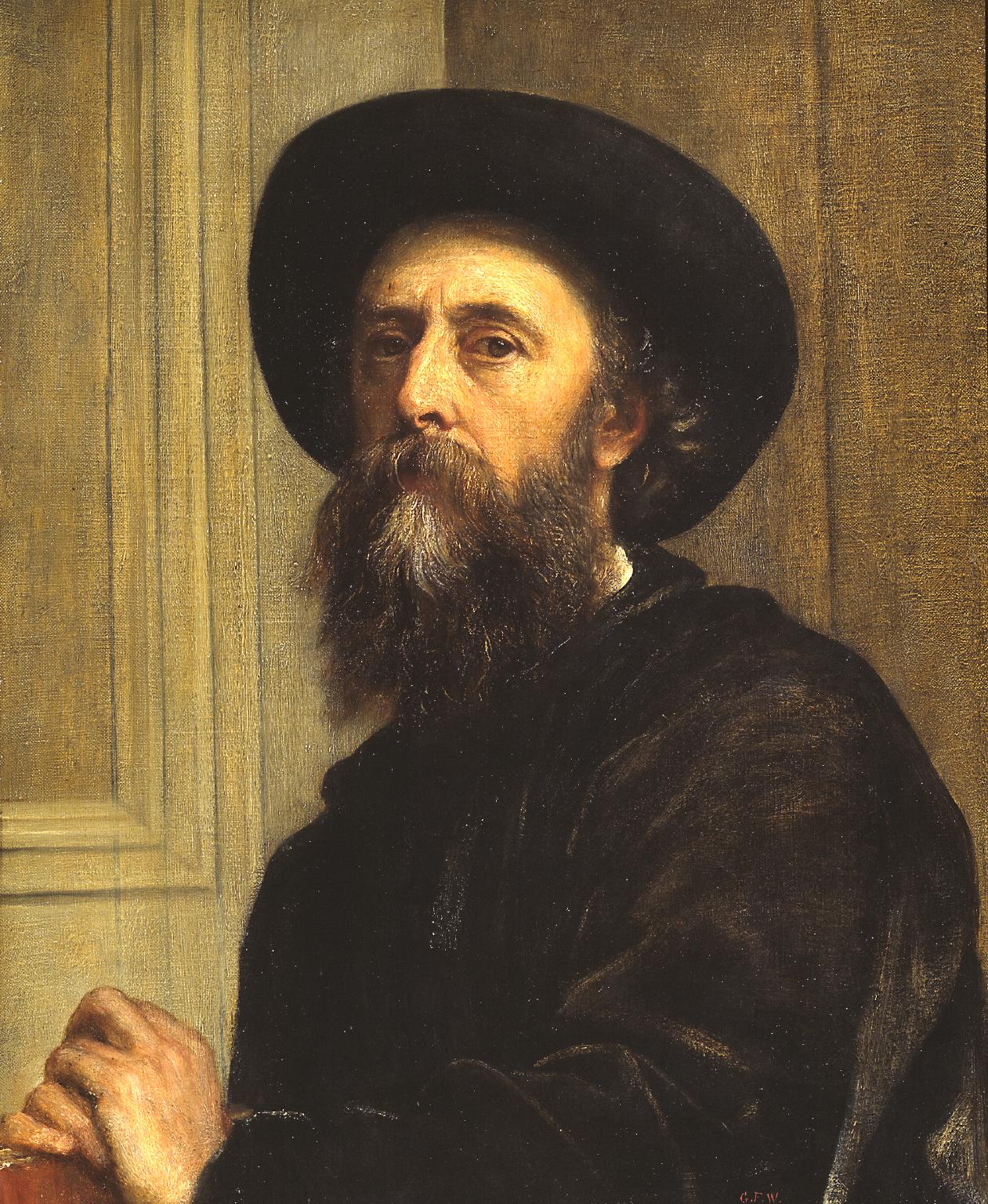
George Frederic Watts was a distinguished British painter and sculptor associated with the Symbolist movement, celebrated for his allegorical works such as "Hope" and "Love and Life." Born in 1817, Watts's career spanned the Victorian era, during which he developed a style that sought to imbue his works with moral and philosophical depth. His ambition was to affect the viewer's mind through "nobility of line and color," aiming to elevate art to a medium of serious reflection and commentary on humanity's condition.
George Frederic Watts's early influences included the Elgin Marbles and the works of Titian, which inspired him to strive for a grandeur in his art that was both morally uplifting and aesthetically profound. He was a part of the vibrant cultural milieu of the Victorian era, mingling with notable figures of the time in the Prinsep circle of bohemians and contributing significantly to the artistic and intellectual life of 19th-century Britain.
Among Watts's most celebrated works are "Hope," featuring a blindfolded figure with a lyre, and "The Sower of the Systems," a visionary piece that prefigured abstract painting and explored themes of creation and the cosmos. This latter work, completed towards the end of his life, exemplifies Watts's lifelong fascination with the interplay between art, science, and spirituality.
George Frederic Watts's legacy is preserved in the Watts Gallery in Compton, Surrey, dedicated to his work, and through his contributions to public art, including the monumental sculpture "Physical Energy" in Kensington Gardens, London. His portraits of prominent Victorians, which include political, literary, and cultural figures, remain highly regarded for their insight and depth.
For those interested in the intersections of art, culture, and history, George Frederic Watts's work offers a rich exploration of Victorian values, aspirations, and anxieties. His enduring influence on British art and his role in the Symbolist movement make his work a key subject of study for collectors and experts in art and antiques.
To stay informed about exhibitions, sales, and events related to George Frederic Watts, signing up for updates is recommended. This will ensure that enthusiasts and collectors alike are always up-to-date on opportunities to engage with Watts's impactful legacy.



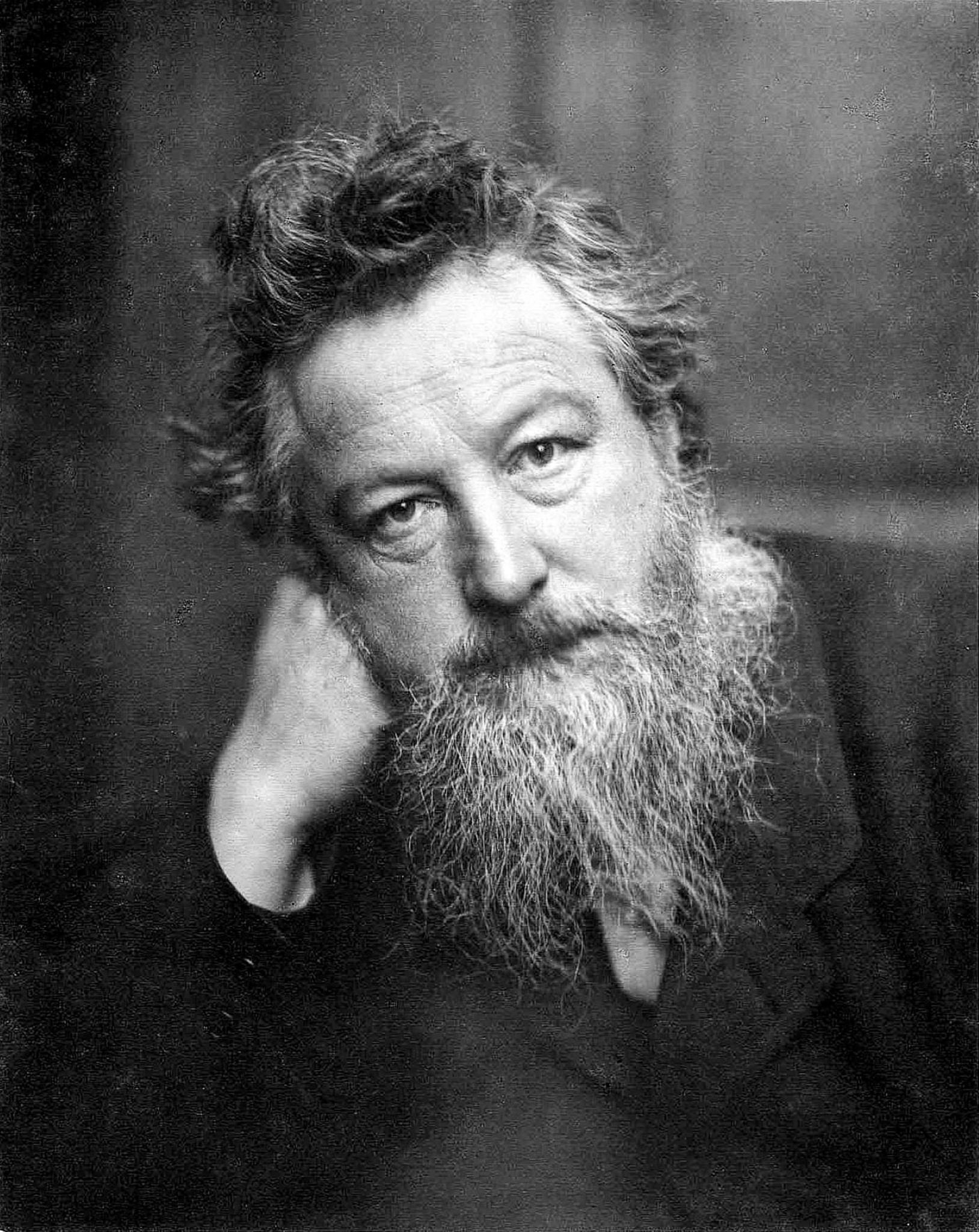
William Morris was a British artist, designer, poet, and social activist, celebrated for his profound impact on the decorative arts and his role in the Arts and Crafts movement. Born in Walthamstow, Essex, in 1834, Morris developed a fascination with medieval architecture and landscapes, influencing his artistic endeavors. He founded Morris & Company, known for producing exquisite textiles, wallpapers, and various decorative items that emphasized craftsmanship and beauty.
William Morris's Kelmscott Press, established in the 1890s, aimed to revive traditional book-making methods, producing works with high-quality materials and craftsmanship. One notable achievement was the Kelmscott Chaucer, a collaboration with Edward Burne-Jones that is still celebrated for its intricate designs and craftsmanship.
William Morris's influence extended beyond his lifetime, with his designs continuing to inspire artists and designers. His works are housed in prestigious institutions like The Metropolitan Museum of Art, reflecting his enduring legacy in the art world. His commitment to social causes, particularly through his socialist beliefs, further highlights his multifaceted contributions to culture and society.
If you're intrigued by William Morris's work and his influence on art and design, consider signing up for updates. Stay informed about new product sales and auction events related to William Morris's legacy, ensuring you don't miss out on owning a piece of this historic artistry.


Simeon Solomon was a British painter associated with the Pre-Raphaelites who was noted for his depictions of Jewish life and same-sex desire. His career was cut short as a result of public scandal following his arrests and convictions for attempted sodomy in 1873 and 1874.
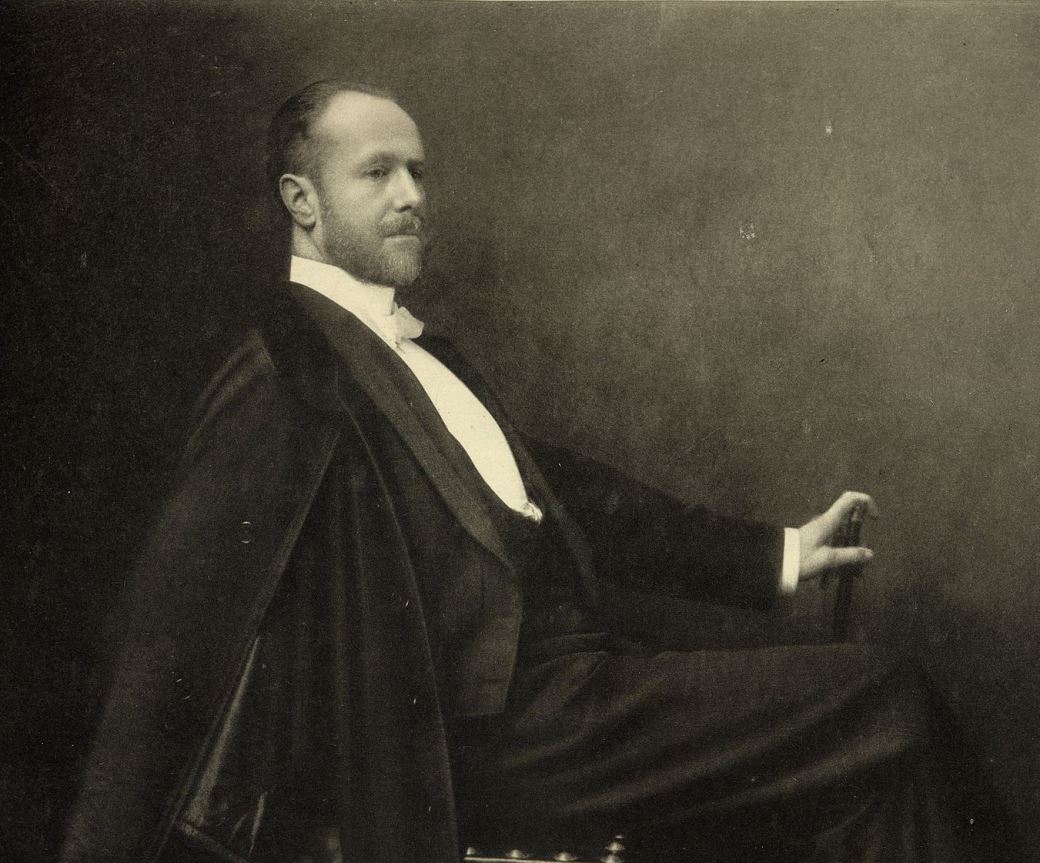
Fernand Khnopff, full name Fernand-Edmond-Jean-Marie Khnopff, was a Belgian Symbolist painter, graphic artist, sculptor and art historian.
Born into a wealthy family, Fernand attended the Royal Academy of Fine Arts in Brussels, where he studied painting with Xavier Mellerie. Throughout his years at the academy, Khnopff spent summers in Paris studying art, and at the 1878 World's Fair he saw the works of Pre-Raphaelite Edward Burne-Jones and Symbolist Gustave Moreau, which had a decisive influence on his work.
In the early 1880s Khnopff began to exhibit his Symbolist works, often inspired by literary works, particularly by Gustave Flaubert. His paintings combined precise realism with an ethereal fairy-tale atmosphere, and he also painted portraits.
In 1883 Khnopff co-founded Les Vingt, a group of Belgian avant-garde artists. From the early 1990s, he collaborated regularly with the Brussels opera house Royal de la Monnaie, designing costumes and sets for many productions. He also designed the interiors of Brussels' landmark buildings: the Maison Stoclet and the Hôtel de Ville in Saint-Gilles.


George Frederic Watts was a distinguished British painter and sculptor associated with the Symbolist movement, celebrated for his allegorical works such as "Hope" and "Love and Life." Born in 1817, Watts's career spanned the Victorian era, during which he developed a style that sought to imbue his works with moral and philosophical depth. His ambition was to affect the viewer's mind through "nobility of line and color," aiming to elevate art to a medium of serious reflection and commentary on humanity's condition.
George Frederic Watts's early influences included the Elgin Marbles and the works of Titian, which inspired him to strive for a grandeur in his art that was both morally uplifting and aesthetically profound. He was a part of the vibrant cultural milieu of the Victorian era, mingling with notable figures of the time in the Prinsep circle of bohemians and contributing significantly to the artistic and intellectual life of 19th-century Britain.
Among Watts's most celebrated works are "Hope," featuring a blindfolded figure with a lyre, and "The Sower of the Systems," a visionary piece that prefigured abstract painting and explored themes of creation and the cosmos. This latter work, completed towards the end of his life, exemplifies Watts's lifelong fascination with the interplay between art, science, and spirituality.
George Frederic Watts's legacy is preserved in the Watts Gallery in Compton, Surrey, dedicated to his work, and through his contributions to public art, including the monumental sculpture "Physical Energy" in Kensington Gardens, London. His portraits of prominent Victorians, which include political, literary, and cultural figures, remain highly regarded for their insight and depth.
For those interested in the intersections of art, culture, and history, George Frederic Watts's work offers a rich exploration of Victorian values, aspirations, and anxieties. His enduring influence on British art and his role in the Symbolist movement make his work a key subject of study for collectors and experts in art and antiques.
To stay informed about exhibitions, sales, and events related to George Frederic Watts, signing up for updates is recommended. This will ensure that enthusiasts and collectors alike are always up-to-date on opportunities to engage with Watts's impactful legacy.

George Frederic Watts was a distinguished British painter and sculptor associated with the Symbolist movement, celebrated for his allegorical works such as "Hope" and "Love and Life." Born in 1817, Watts's career spanned the Victorian era, during which he developed a style that sought to imbue his works with moral and philosophical depth. His ambition was to affect the viewer's mind through "nobility of line and color," aiming to elevate art to a medium of serious reflection and commentary on humanity's condition.
George Frederic Watts's early influences included the Elgin Marbles and the works of Titian, which inspired him to strive for a grandeur in his art that was both morally uplifting and aesthetically profound. He was a part of the vibrant cultural milieu of the Victorian era, mingling with notable figures of the time in the Prinsep circle of bohemians and contributing significantly to the artistic and intellectual life of 19th-century Britain.
Among Watts's most celebrated works are "Hope," featuring a blindfolded figure with a lyre, and "The Sower of the Systems," a visionary piece that prefigured abstract painting and explored themes of creation and the cosmos. This latter work, completed towards the end of his life, exemplifies Watts's lifelong fascination with the interplay between art, science, and spirituality.
George Frederic Watts's legacy is preserved in the Watts Gallery in Compton, Surrey, dedicated to his work, and through his contributions to public art, including the monumental sculpture "Physical Energy" in Kensington Gardens, London. His portraits of prominent Victorians, which include political, literary, and cultural figures, remain highly regarded for their insight and depth.
For those interested in the intersections of art, culture, and history, George Frederic Watts's work offers a rich exploration of Victorian values, aspirations, and anxieties. His enduring influence on British art and his role in the Symbolist movement make his work a key subject of study for collectors and experts in art and antiques.
To stay informed about exhibitions, sales, and events related to George Frederic Watts, signing up for updates is recommended. This will ensure that enthusiasts and collectors alike are always up-to-date on opportunities to engage with Watts's impactful legacy.


